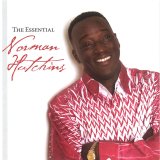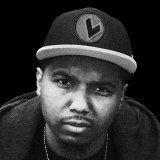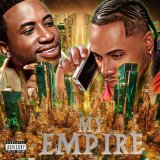Famous lyrics by »
A freak show, also known as a creep show, is an exhibition of biological rarities, referred to in popular culture as "freaks of nature". Typical features would be physically unusual humans, such as those uncommonly large or small, those with intersex variations, those with extraordinary diseases and conditions, and others with performances expected to be shocking to viewers. Heavily tattooed or pierced people have sometimes been seen in freak shows (more common in modern times as a sideshow act), as have attention-getting physical performers such as fire-eating and sword-swallowing acts.Since at least the medieval period, deformed people have often been treated as objects of interest and entertainment, and crowds have flocked to see them exhibited. A famous early modern example was the exhibition at the court of King Charles I of Lazarus and Joannes Baptista Colloredo, two conjoined brothers born in Genoa, Italy. While Lazarus appeared to be otherwise ordinary, the underdeveloped body of his brother dangled from his chest. When Lazarus was not exhibiting himself, he covered his brother with his cloak to avoid unnecessary attention.As well as exhibitions, freak shows were popular in the taverns and fairgrounds where the freaks were often combined with talent displays. For example, in the 18th century, Matthias Buchinger, born without arms or lower legs, entertained crowds with astonishing displays of magic and musical ability, both in England and later, Ireland.It was in the 19th century, both in the United States and Europe, where freak shows finally reached maturity as successful commercially run enterprises.During the late 19th century and the early 20th century freak shows were at their height of popularity; the period 1840s through to the 1940s saw the organized for-profit exhibition of people with physical, mental or behavioral rarities. Although not all abnormalities were real, some being alleged, the exploitation for profit was seen as an accepted part of American culture. The attractiveness of freak shows led to the spread of the shows that were commonly seen at amusement parks, circuses, dime museums and vaudeville. The amusement park industry flourished in the United States by the expanding middle class who benefited from short work weeks and a larger income. There was also a shift in American culture that influenced people to see leisure activities as a necessary and beneficial equivalent to working, thus leading to the popularity of the freak show.The showmen and promoters exhibited all types of freaks. People who appeared non-white or who had a disability were often exhibited as unknown races and cultures. These “unknown” races and disabled whites were advertised as being undiscovered humans to attract viewers. For example, those with microcephaly, a condition linked to intellectual disabilities and characterized by a very small, pointed head and small overall structure, were considered or characterized as “missing links” or as atavistic specimens of an extinct race. Hypopituitary dwarfs who tend to be well proportioned were advertised as lofty. Achondroplastic dwarfs, whose head and limbs tend to be out of proportion to their trunks, were characterized as exotic mode. Those who were armless, legless, or limbless were also characterized in the exotic mode as animal-people, such as “The Snake-Man”, and “The Seal Man”.There were four ways freak shows were produced and marketed. The first was the oral spiel or lecture. This featured a showman or professor who managed the presentation of the people or “freaks”. The second was a printed advertisement usually using long pamphlets and broadside or newspaper advertisement of the freak show. The third step included costuming, choreography, performance, and space used to display the show, designed to emphasize the things that were considered abnormal about each performer. The final stage was a collectable drawing or photograph that portrayed the group of freaks on stage for viewers to take home. The collectable printed souvenirs were accompanied by recordings of the showmen's pitch, the lecturer's yarn, and the professor's exaggerated accounts of what was witnessed at the show. Exhibits were authenticated by doctors who used medical terms that many could not comprehend but which added an air of authenticity to the proceedings. Freak show culture normalized a specific way of thinking about gender, race, sexual aberrance, ethnicity, and disability.During the first decade of the twentieth century, the popularity of the freak show was starting to dwindle. In their prime, freak shows had been the main attraction of the midway, but by 1940 they were starting to lose their audience, with credible people turning their backs on the show. In the nineteenth century, science supported and legitimized the growth of freak shows, but by the twentieth century, the medicalization of human abnormalities contributed to the end of the exhibits' mystery and appeal.
0 fans







Share your thoughts on Freak Show with the community:
Report Comment
We're doing our best to make sure our content is useful, accurate and safe.
If by any chance you spot an inappropriate comment while navigating through our website please use this form to let us know, and we'll take care of it shortly.
Attachment
You need to be logged in to favorite.
Log In